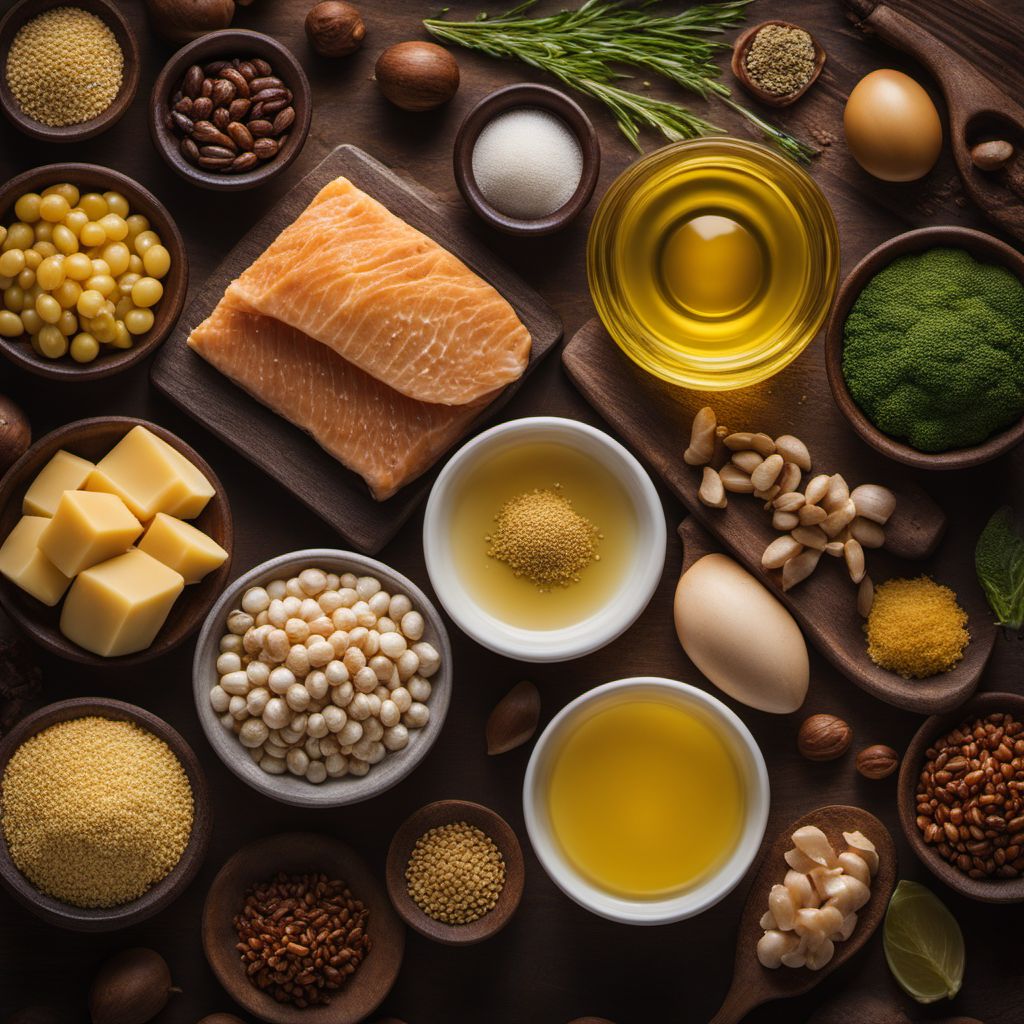
Ingredient
Fats and oils from marine animals
Oceanic Delights: Exploring Fats and Oils from Marine Animals
Fats and oils from marine animals are derived from creatures living in the ocean, such as fish, seals, and whales. These ingredients are known for their distinct characteristics, including rich flavors, smooth textures, and varying appearances. Fish oils, for example, are often golden in color and have a slightly fishy aroma, while seal fats are creamy white and possess a mild, buttery taste. These fats and oils can range from liquid to solid at room temperature, depending on the specific animal and processing method used. They are commonly used in cooking, baking, and as condiments, adding depth and complexity to a wide range of dishes.
Origins and history
The use of fats and oils from marine animals dates back centuries and is deeply rooted in various cultures. In coastal regions, such as Scandinavia, Japan, and Alaska, these ingredients have been a vital part of traditional diets due to the abundance of marine life. Indigenous communities, like the Inuit, have long relied on seal and whale fats for sustenance and survival in harsh Arctic environments. Historically, these fats and oils were also used for medicinal purposes, as they were believed to have healing properties. Today, the production and consumption of fats and oils from marine animals continue to be influenced by cultural traditions and sustainable fishing practices.
Nutritional information
Fats and oils from marine animals are a good source of omega-3 fatty acids, which are essential for brain health, heart health, and reducing inflammation. They also provide vitamins A and D, as well as other important nutrients. However, it is important to consume them in moderation due to their high calorie content.
Allergens
Fats and oils from marine animals may pose allergenic risks for individuals with seafood allergies. It is crucial to exercise caution and consult with a healthcare professional if you have known allergies.
How to select
When selecting fats and oils from marine animals, look for products that are sustainably sourced and have undergone proper processing and purification. Check for certifications such as MSC (Marine Stewardship Council) or ASC (Aquaculture Stewardship Council) to ensure responsible fishing practices. Additionally, opt for products that are fresh, free from any off-putting odors, and stored in appropriate packaging to maintain quality.
Storage recommendations
To maintain the freshness and quality of fats and oils from marine animals, store them in a cool, dark place away from direct sunlight. It is recommended to refrigerate or freeze these ingredients to extend their shelf life. Properly sealed containers or airtight packaging can help prevent oxidation and rancidity.
How to produce
Producing fats and oils from marine animals is a complex process that requires specialized equipment and knowledge. It is best left to professionals in the fishing and seafood industry.
Preparation tips
Fats and oils from marine animals can be used in various ways in the kitchen. Fish oils, such as cod liver oil, are commonly consumed as dietary supplements due to their high omega-3 content. They can also be used as a flavor enhancer in salad dressings, marinades, or drizzled over cooked dishes. Seal fats, on the other hand, can be rendered and used for cooking, similar to other animal fats like butter or lard. They add a unique richness to dishes and are particularly delicious when used for frying or sautéing seafood. When using these ingredients, it is important to consider their distinct flavors and adjust seasoning accordingly.
Culinary uses
Fats and oils from marine animals are widely used in various cuisines. Fish oils are commonly used in Scandinavian dishes, such as gravlax or pickled herring, to enhance the flavors of cured or pickled fish. Seal fats are traditionally used in Inuit cuisine, where they are incorporated into stews, soups, and even desserts. These ingredients can also be used as a substitute for other fats in recipes, adding a unique twist to dishes.
Availability
Fats and oils from marine animals are commonly available in regions with access to fresh seafood, such as coastal areas and countries with a strong fishing industry. They can also be found in specialty stores or online retailers that focus on sustainable seafood products.

